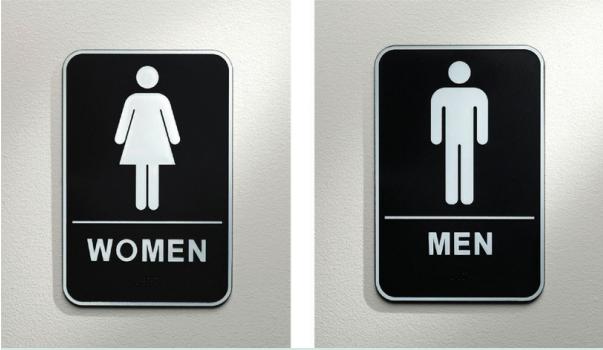To what extent does the equation for the waiting time in a queue help explain why queues
Question:
To what extent does the equation for the waiting time in a queue help explain why queues for the women’s room might be longer than queues for the men’s room before 2005 in New York City? Say women on average take twice as long in the restroom (not including waiting time) than men. Is the 2:1 ratio for flushing capacity the right ratio? Besides adding flushing capacity, what can be done to reduce waiting times for restrooms?
Here is a question you might not have thought about much, unless you are a woman: “What is the right number of toilets to have in a bathroom?” We all must use toilets every day, and we often need to use public toilets. So somebody in charge of building codes needs to determine if there should be a standard for restroom construction in public buildings.
Before 2005, New York City architectural codes stipulated that there should be an equal amount of space given to the men’s and women’s rooms. For example, if the women’s room has 25 square meters, then the men’s room should have 25 square meters. Sounds fair, right? Not so fast. Women’s rooms only have toilets, whereas men’s rooms can have toilets and urinals. Urinals take less space than a toilet, so it is possible that a men’s room with the same area as a women’s room actually has more “flushing capacity.” For example, with equal space dedicated to the two restrooms, a building might have five toilets in the women’s room and three toilets and three urinals in the men’s room.
In 2005, New York City changed the requirements. In what has been come to be called “potty parity,” New York City stipulated that there should be at least a 2:1 ratio of flushing units between the women’s room and the men’s room.
The issue of potty parity is not just for New Yorkers. In China, petitions have been filed with the Ministry of Housing and Urban-Rural Development and other departments to account for the extra time women need on each bathroom visit—89 seconds instead of 39 seconds for men. Maybe as a result of their efforts, the World Expo in Shanghai in 2010 used a ratio of 2.5 to one with its new bathrooms.

Step by Step Answer:

Operations Management
ISBN: 9781260547610
2nd International Edition
Authors: Gerard Cachon, Christian Terwiesch





